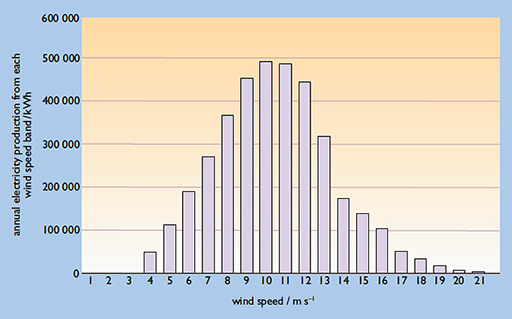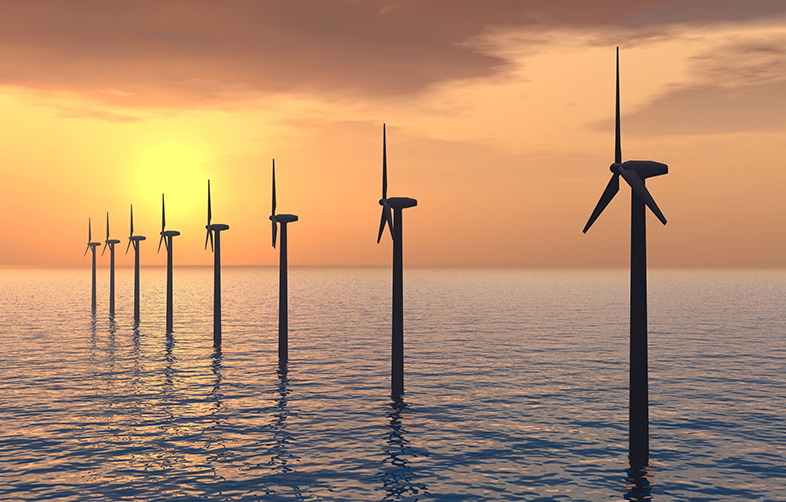5.1 Calculating wind energy distribution
For each incremental wind speed between the cut-in wind speed and the shut-down wind speed the energy produced can be obtained by using this equation:
This data can then be used to plot a wind speed – annual output energy distribution graph, such as that shown in Figure 12 .

The total energy produced in a year is then calculated by summing the all the energies produced at each wind speed within the operating range of the turbine.
The wind speed distribution at a site is provided by measuring equipment that records the number of hours for which the wind speed lies within each one metre per second (1 m s−1) wide speed ‘band’, e.g:
- 0–1 m s−1
- 1–2 m s−1
- 2–3 m s−1, etc.
The longer the period over which measurements are taken, the more accurate is the estimate of the wind speed frequency distribution.
Activity 1 Factors on total energy generated
What other factors could affect the total energy generated?
Answer
Other additional factors that could affect the total generated energy include:
- transmission losses
- the availability of the turbine to generate.
Availability indicates the reliability of the turbine installation and is the fraction or percentage of a given period of time for which it is available to generate, when the wind is blowing within the turbine’s operating range.
Current commercial wind turbines typically have annual availabilities in excess of 90%, many have operated at over 95% and some are achieving 98%.
Let’s now look at a quick way of making a rough estimate of annual energy production.

